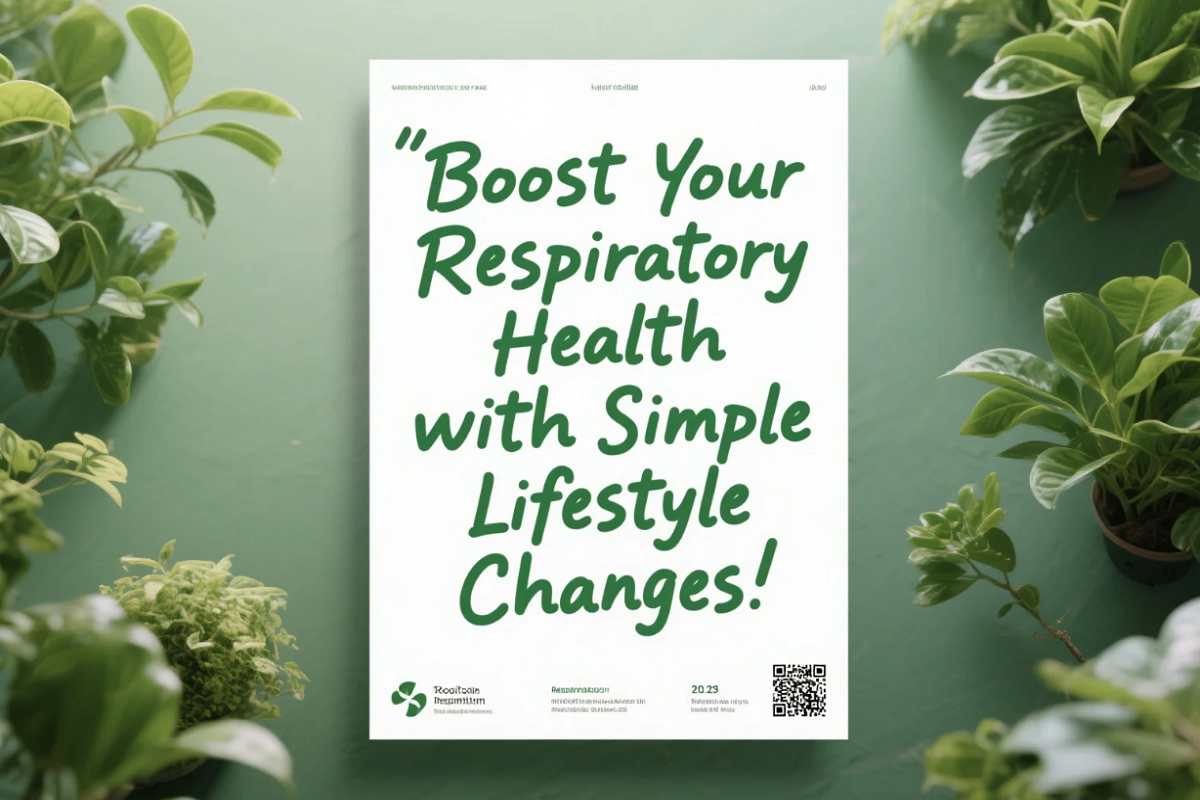Struggling to Breathe? 5 Steps to Restore Your Respiratory Health
-
105
- 18 Mar, 2025

Struggling to breathe can feel overwhelming, but the good news is, there are actionable steps you can take to restore your respiratory health. Whether you’re dealing with asthma, allergies, or general breathing difficulties, it's essential to understand the power of breathing and lung care in your overall well-being.
In this article, we will outline five simple steps that can help you restore your respiratory health and breathe easier. By following these steps, you’ll gain better lung function, reduce shortness of breath, and take control of your respiratory health. Let’s dive in!
What You’ll Learn in This Article:
- How to improve lung function through breathing exercises.
- The role of a balanced diet in supporting respiratory health.
- Practical tips for cleaning and purifying the air around you.
- Why regular exercise is crucial for your respiratory health.
- Stress reduction techniques that can positively impact your respiratory system.
- Recognizing the Signs of Poor Respiratory Health
Before we jump into solutions, it’s important to recognize the symptoms that indicate your respiratory health may need attention. Common signs include:
- Shortness of breath even with minor activity.
- Persistent coughing, wheezing, or tightness in the chest.
- Difficulty breathing, especially when lying down or during exercise.
- Excessive fatigue or feeling winded without exertion.
If you’ve been experiencing any of these symptoms, it may be time to take action. Restoring your respiratory health is possible with a few simple lifestyle adjustments. Now, let’s dive into the steps!
Step 1: Incorporate Breathing Exercises into Your Routine
One of the easiest and most effective ways to enhance respiratory health is through breathing exercises. These exercises help strengthen the diaphragm, improve lung capacity, and increase oxygen intake, ultimately improving overall lung function.
The Benefits of Breathing Exercises:
- Strengthens the diaphragm and enhances lung capacity.
- Helps regulate breath, reducing shortness of breath.
- Promotes relaxation and reduces anxiety, both of which can contribute to better breathing.
3 Effective Breathing Exercises:
Diaphragmatic Breathing (Belly Breathing):
This technique promotes diaphragmatic breathing, fostering deeper, more mindful breaths that engage the diaphragm rather than shallow chest breathing. It helps improve the efficiency of your lungs and reduces feelings of breathlessness.
How-to: Lie down or sit comfortably. Set one hand on your chest and the other on your waist. Inhale deeply through your nose, making sure your abdomen expands more than your chest. Exhale slowly through your mouth.
Pursed Lip Breathing:
This technique helps control the rate of breathing and ensures you get more oxygen with each breath.
How-to: Inhale slowly through your nose for 2 counts, then exhale slowly through pursed lips for 4 counts, as if blowing through a straw.
Box Breathing:
- A simple technique to calm the body and mind while improving lung capacity.
- How-to: Inhale for 4 counts, hold for 4 counts, exhale for 4 counts, then hold for 4 counts. Repeat for 5-10 minutes.
These breathing exercises can be performed daily to significantly improve your respiratory health.
Step 2: Maintain a Diet That Supports Respiratory Health
A well-balanced diet can significantly impact your respiratory health. Certain nutrients support lung function and reduce inflammation, making it easier for you to breathe.
Key Nutrients for Healthy Lungs:
Vitamin C: Known for its antioxidant properties, Vitamin C helps fight off inflammation and respiratory infections. Citrus fruits, strawberries, and bell peppers are rich in nutrients and make great sources of these vitamins.
Omega-3 Fatty Acids: These healthy fats reduce inflammation in the lungs and are found in foods like salmon, chia seeds, and walnuts.
Magnesium: This mineral helps relax the airways and is essential for proper respiratory function. Magnesium-rich foods include spinach, almonds, and bananas.
Antioxidants: Foods like berries, green tea, and dark chocolate contain powerful antioxidants that help protect the lungs from oxidative damage.
On the flip side, try to avoid processed foods, excessive sugar, and dairy products, which can exacerbate respiratory conditions such as asthma.
Step 3: Improve Your Indoor Air Quality
The air quality in your environment plays a significant role in your respiratory health. Pollutants, allergens, and toxins in the air can aggravate asthma, cause allergic reactions, and worsen other respiratory conditions.
How to Clean Your Air:
Use Air Purifiers: High-quality air purifiers can filter out allergens, dust, pet dander, and pollutants, making the air cleaner and easier to breathe.
Avoid Smoking Indoors: Smoking is a leading cause of respiratory diseases. If you smoke, quitting is the most beneficial change you can make for your lungs.
Keep Humidity in Check: Both dry and overly humid environments can irritate your lungs. Use a humidifier or dehumidifier to maintain ideal indoor humidity levels (ideally 40-60%).
Ventilate Your Home: Make it a habit to open windows frequently, letting fresh air flow through your space. If you live in an area with high pollution, consider using an air quality monitor to track the air’s cleanliness.
Improving your indoor air quality is a simple yet effective way to support your respiratory system and reduce exposure to harmful irritants.
Step 4: Exercise Regularly for Better Lung Function
Exercise is an essential part of maintaining overall health, and it plays a critical role in improving respiratory health. Physical activity strengthens the respiratory muscles, enhances lung capacity, and improves oxygen efficiency throughout the body.
The Benefits of Exercise for Respiratory Health:
- Improves lung capacity and the efficiency of oxygen transport.
- Strengthens respiratory muscles, making breathing easier and less labor-intensive.
- Enhances circulation, which helps deliver oxygen to the tissues more efficiently.
Types of Exercise for Better Lung Function:
Walking or Jogging: Aerobic exercises like walking or jogging help improve cardiovascular and respiratory health.
Swimming: Swimming is particularly beneficial for lung health because the breathing techniques required during swimming strengthen the respiratory system.
Yoga: Yoga combines deep breathing with gentle movement, helping to improve lung function while reducing stress and anxiety.
Aim for at least 150 minutes of moderate exercise per week to keep your lungs in optimal condition. Always check with a healthcare professional before beginning a new exercise routine, especially if you have any existing respiratory conditions.
Step 5: Manage Stress to Improve Breathing
Mental and emotional well-being are closely linked to respiratory health. Chronic stress can cause shallow breathing, which may lead to a feeling of breathlessness or anxiety.
Stress Reduction Techniques for Better Breathing:
Mindfulness Meditation: This practice helps calm the mind and regulate breathing patterns, promoting relaxation and improved lung function.
Progressive Muscle Relaxation (PMR): This technique involves tensing and relaxing different muscle groups, which can help lower stress and enhance your ability to breathe deeply.
Adequate Sleep: Quality sleep is essential for both mental and respiratory health. Make sure you’re getting 7-9 hours of sleep each night to allow your body to recover.
By incorporating stress management techniques into your routine, you can enhance your respiratory health and improve your quality of life.
Struggling to breathe can be frustrating, but there’s hope. By following these five steps—incorporating breathing exercises, maintaining a healthy diet, improving air quality, exercising regularly, and managing stress—you can restore and support your respiratory health.
Remember, small daily changes can lead to long-term improvements. If you continue to experience severe or persistent breathing issues, consult a healthcare provider to rule out underlying conditions.










